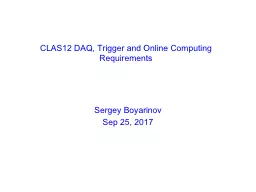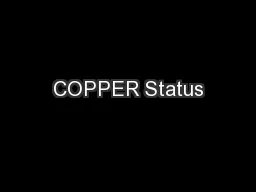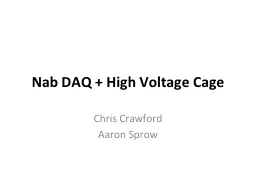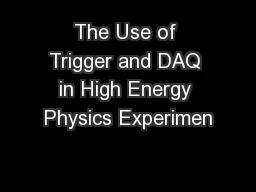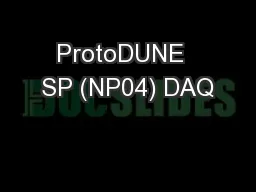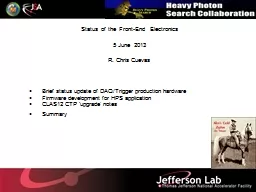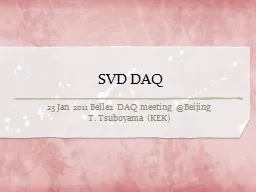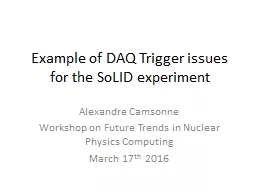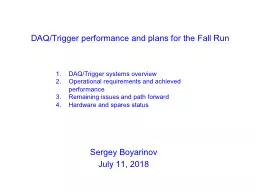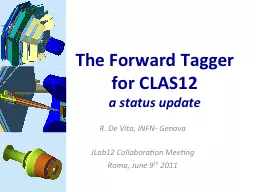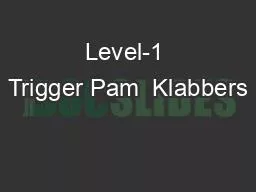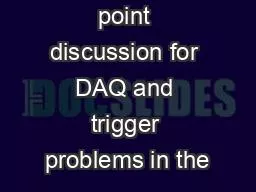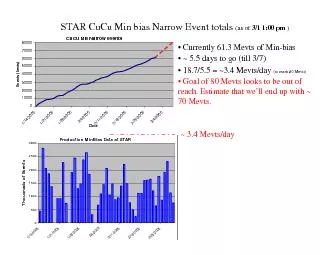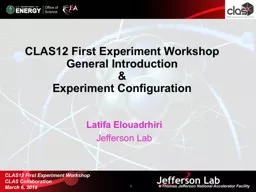PPT-CLAS12 DAQ, Trigger and Online Computing Requirements
Author : evadeshell | Published Date : 2020-06-17
Sergey Boyarinov Sep 25 2017 N otation ECAL old EC electromagnetic calorimeter PCAL preshower calorimeter DC drift chamber HTCC high threshold cherenkov counter
Presentation Embed Code
Download Presentation
Download Presentation The PPT/PDF document "CLAS12 DAQ, Trigger and Online Computin..." is the property of its rightful owner. Permission is granted to download and print the materials on this website for personal, non-commercial use only, and to display it on your personal computer provided you do not modify the materials and that you retain all copyright notices contained in the materials. By downloading content from our website, you accept the terms of this agreement.
CLAS12 DAQ, Trigger and Online Computing Requirements: Transcript
Download Rules Of Document
"CLAS12 DAQ, Trigger and Online Computing Requirements"The content belongs to its owner. You may download and print it for personal use, without modification, and keep all copyright notices. By downloading, you agree to these terms.
Related Documents

